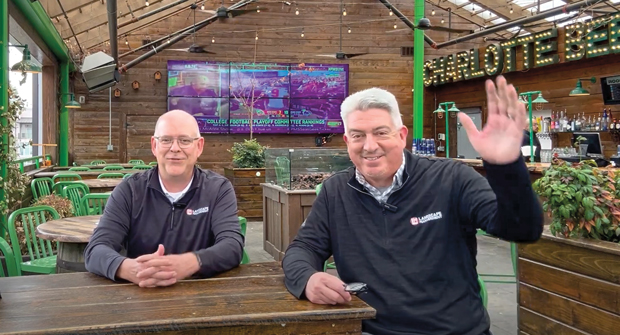 From the state that gave us skateboards, the Beach Boys and many of the trends we associate with modern landscaping comes an outdoor living innovation that is figuring larger in our industry: Synthetic turf.
From the state that gave us skateboards, the Beach Boys and many of the trends we associate with modern landscaping comes an outdoor living innovation that is figuring larger in our industry: Synthetic turf.
No, artificial turf wasn’t invented in California and it’s not manufactured there, but it has become one of the hottest landscape products in the Golden State as evidenced by the large number of fake grass suppliers at February’s California Landscape Association Landscape Industry Show. The state’s 37 million residents (about 12% of our nation’s population), make it the largest landscape market in the U.S.
In California and elsewhere a decade ago, synthetic turf was being promoted as a niche landscape product, primarily for backyard putting greens, dog runs or areas within a landscape where it’s difficult to maintain turfgrass. These remain popular uses for the product that’s available in a surprising array of styles.
But the synthetic turf industry is now eyeing the millions of acres of lawns on residential and commercial properties, and and it’s promoting its engineered, branded, poly products as an environmentally friendly alternative to turfgrass lawns. To that end, it’s aggressively touting the “environmental” benefits of its products that require no watering, fertilization, pesticide use or mowing.
The industry also claims that synthetic turf reduces air pollution, decreases dust, and slows or prevents erosion — claims that most people in professional lawn services would say are exaggerated, if not suspect, at least compared to the research-backed environmental benefits of maintained, living turfgrass.
From sports to home lawns
The point here isn’t to debate the relative environmental or lifestyle benefits of turfgrass versus synthetic turf, but to identify a bonifide and growing landscape trend, especially if the acceptance of synthetic turf in home lawns follows what’s happening in sports turf.
Synthetic turf erupted into the sports field market beginning in the mid-1960s, as professional and university teams across the country embraced it. Its popularity waned in the 1980s when turfgrass researchers, borrowing from golf, introduced to sports field builder innovations such as sand-based drainage systems and improved turfgrass cultivars.
Given up for dead by the late 1980s, one company in particular, FieldTurf, revived the industry with highly engineered synthetic turf product that looked more like turfgrass and provided superior playing characteristics than earlier versions of the product.
During the past decade the number of installations of synthetic turf sports fields installations, including conversions from turfgrass, have soared.
Yes, California’s aggressive efforts to convince property owners to conserve water is boosting synthetic turf installations there. But there’s more going on than that, including the fake grass industry’s message that fake grass remains green and requires less maintenance than real grass.
Will that message resonate with property owners elsewhere in the U.S. where water isn’t such a big issue? My guess is, yes.
Check it out. Some of you will compete against it; others will embrace it as a service opportunity.

